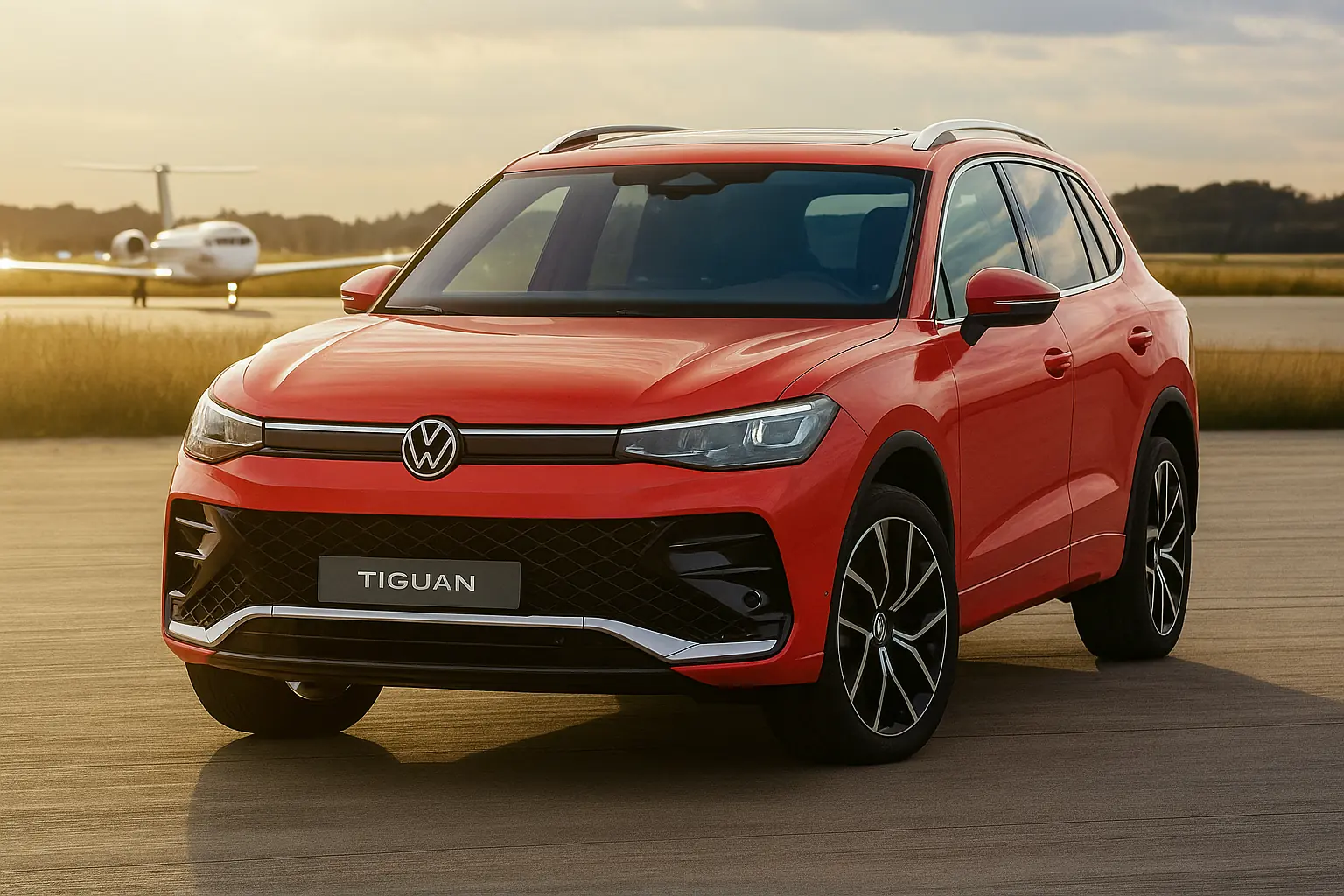
MSRP: $30,300- 40,300
7 /10
Rating
Pros
- Sophisticated European Design
- User-friendly Interior Layout
- Standard Safety Features
Cons
- Infotainment System Glitches
- Middling Engine Performance
- Limited Cargo Space
2024 Volkswagen Tiguan SEL R-Line Review with Vyocar
Volkswagen Tiguan 2024 delivers understated sophistication and practical functionality with just enough tech, space, and style to quietly stand out in a crowded crossover segment—without pretending to be something it’s not.
Overview
At first glance, the sheetmetal gives off that “well, at least it’s not a minivan” energy—until you realize this compact-crossover actually pulls off a premium European design vibe without pretending it belongs in a BMW showroom. There’s a kind of modest elegance to it, the type that says, “I know I’m not the Atlas Cross Sport, and honestly, I’m fine with that.” The cabin? Surprisingly upscale, with materials that don’t scream “budget rental,” and an interior layout that’s far more intuitive than some soon-to-be-revealed rivals that rely on touchscreen yoga. The 2.0-liter turbocharged four-cylinder engine delivers spirited (yes, really) performance, especially in automatic mode—perfect for anyone who’s tired of SUVs that handle like sedated hippos. It’s not trying to be a Mitsubishi Outlander, but it does offer third-row space for kids or students with low-end GPAs and high expectations. And while it’s no Audi, it gives off just enough VW personality to make buyers feel like they’ve made a class-competitive option that won’t require a second mortgage. Fuel-efficient without being fragile, smooth but still spirited, this crossover makes a strong case for itself in a segment filled with varied, tasteful, yet often soulless peers. It doesn’t need grades, it just needs the right fans—and maybe a break from being compared to the Arteon or Jetta, both of which are… well, different kinds of vehicles entirely.
What’s New for 2024
If you blinked, you probably missed the minor upgrades, but the 2022 Tiguan gains just enough to justify calling this a new model—barely. The S trim feels like the base you settle for when the 2022 R-Line is out of stock, while SE adds faux-leather, adaptive cruise control, and wireless infotainment like it’s 2020 catching up to 2024. There’s also the IQ.DRIVE driver-assistance system, now standard, with lane-centering, auto high beam, and rain-sensing wipers, which all sound flashier than they feel in actual steering operation. The Black trim exists, for people who think darkness equals personality, and the Atlas SEL envy shows in some cosmetic features, like updated headlamps and that classic VW “we tried” wheel design. You get more optional stuff now, but calling it a revolution is like calling your dentist’s waiting room a wellness retreat.
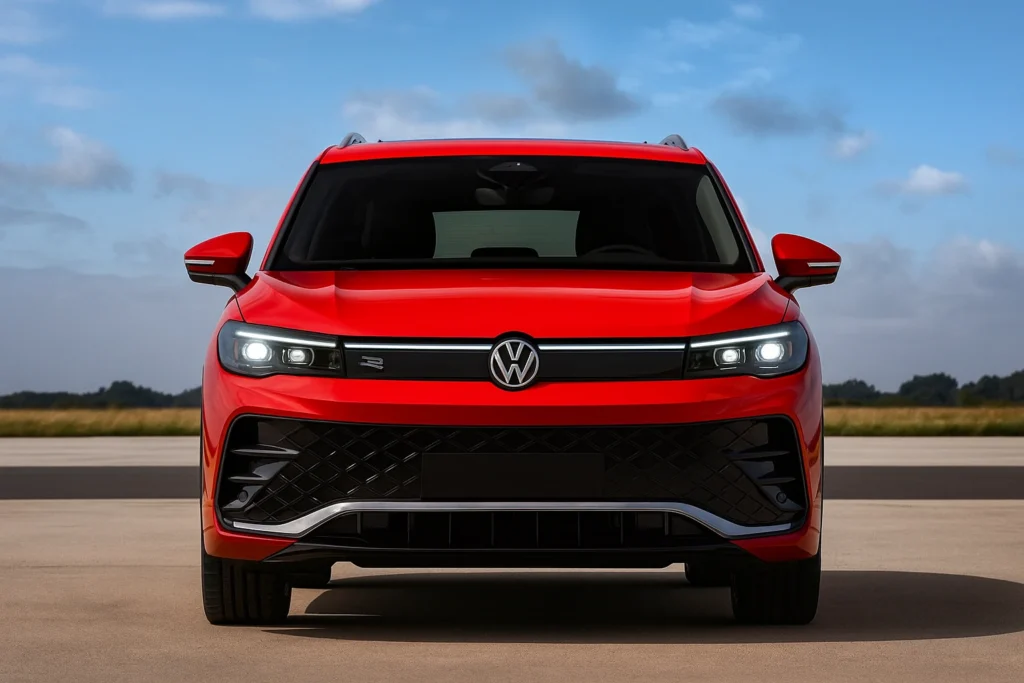
Pricing, Trim Levels, and Best Pick
When I saw the $30,300 start price, I assumed the Base S trim came with a crank window and trauma—but to be fair, you do get IQ.Drive, lane-keeping assist, and a screen that doesn’t look like it was borrowed from a 2012 blender. The SE adds a power-operated liftgate, remote start, and 18-inch wheels, pushing the as-tested price into mid-range territory without fully justifying the leap. If you spring for the $40,250 or $40,300 trims (depending on options), expect a panoramic sunroof, climate control for your rear, and the kind of semi-autonomous mode that feels more like a trust exercise than actual help. Compared to something like the Mazda CX-30 or Toyota Venza, it’s a mixed bag—kind of like paying $1200 for a fancy coat only to realize you live in San Diego. Still, Volkswagen made just enough effort here to recommend the SE trim as the realistic sweet spot for anyone who values functional infotainment over flashy promises.
Powertrain, Transmission, and Driving Dynamics
If you’ve ever wondered what torque feels like when it’s thinking about maybe showing up but then doesn’t—this 2.0-liter turbocharged I-4 might be your spirit engine. With a supposedly 184 hp output and 221 lb-ft of torque, it’s the kind of performance that sounds better on a statistical test sheet than it feels in the real-world. The step-off is more “wait for it…” than “let’s go,” making merging into highway traffic feel like a mild trust fall. Even with AWD and VW’s 4Motion system, traction under low-grip isn’t exactly “confident,” more like “calculated risk.” The smooth-shifting eight-speed automatic transmission is decent, if you like your shifting with a side of “did that happen?” Downshift response lives somewhere between overreacting and underreacting, depending on your rpm mood, and honestly, the throttle response might benefit from a strong coffee and a therapist. For enthusiasts who remember the Golf R or GTI, this ain’t that—think more Mini Countryman without the fun, or a bigger, slower Hyundai Kona with a grudge. On twisty roads, the weighting of the steering feels tuned for comfort, not performance—though it holds its composure well if you keep your expectations at “it’s an SUV.” Handling is reasonably flat for something with three-row aspirations, but throw in a 20-inch wheel, and you’ll feel every breaking hiccup and ride jitter. As for start-stop-turn sequences in city driving, the brake and pedal tuning demand a PhD in foot control—soft when you don’t need it, grabby when you do. Still, there’s ease in how it manages a lot of minor inputs, which might be the powertrain’s biggest win. But if you’re hoping for that hot, sporty action you were promised, maybe don’t. This isn’t a hatchback in disguise—it’s a mild-hybrid drivetrain doing its best BIKE-friendly impression for your family and benefit-in-kind tax rating. Just don’t expect it to rev your soul—or even the battery.
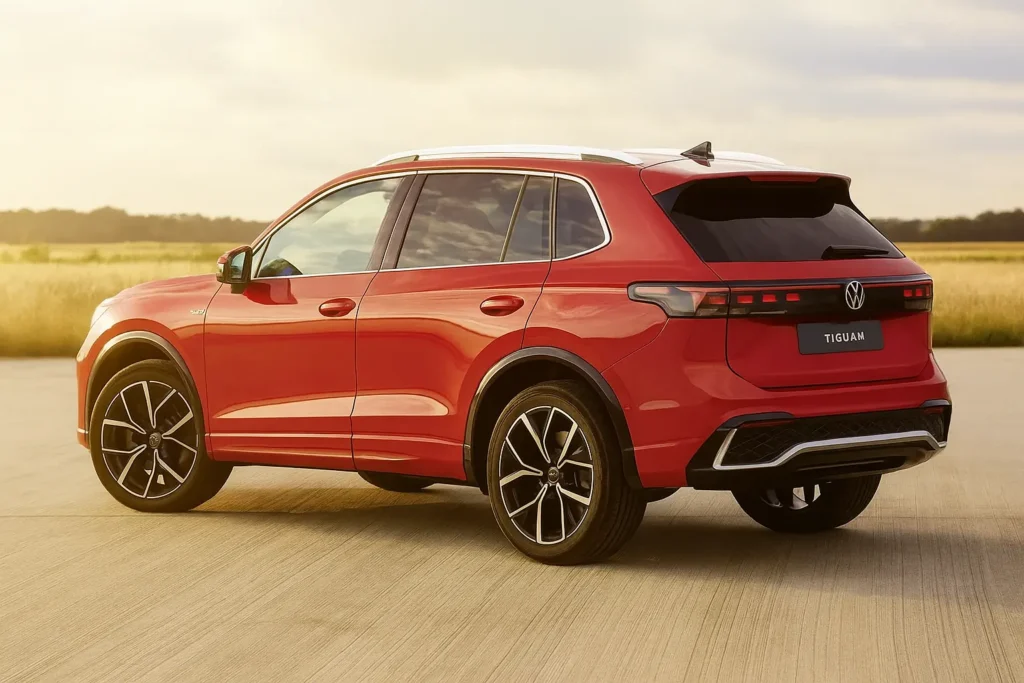
Fuel Efficiency and Real World Testing
Let’s just say the average daily drive felt more like a lesson in patience than performance. The acceleration? Mundane, at best. This vehicle hauls around 4,000 pounds of existential dread with the grace of a caffeinated sloth. No, the fuel efficiency doesn’t redeem it. You get 25 MPG, which sounds fine—until you realize competitors routinely achieve better with less drama. And despite my optimism, nothing I did really helped. The mass just sat there, being excessive and unapologetically heavy through all times of day. If you were hoping for any standout Gas economy in real-world terms, prepare for a disappointing and relatively slow realization. It’s not terrible, but firmly middling, like getting a C+ in a class you accidentally enrolled in. Honestly, I felt like I was being hauled emotionally too.
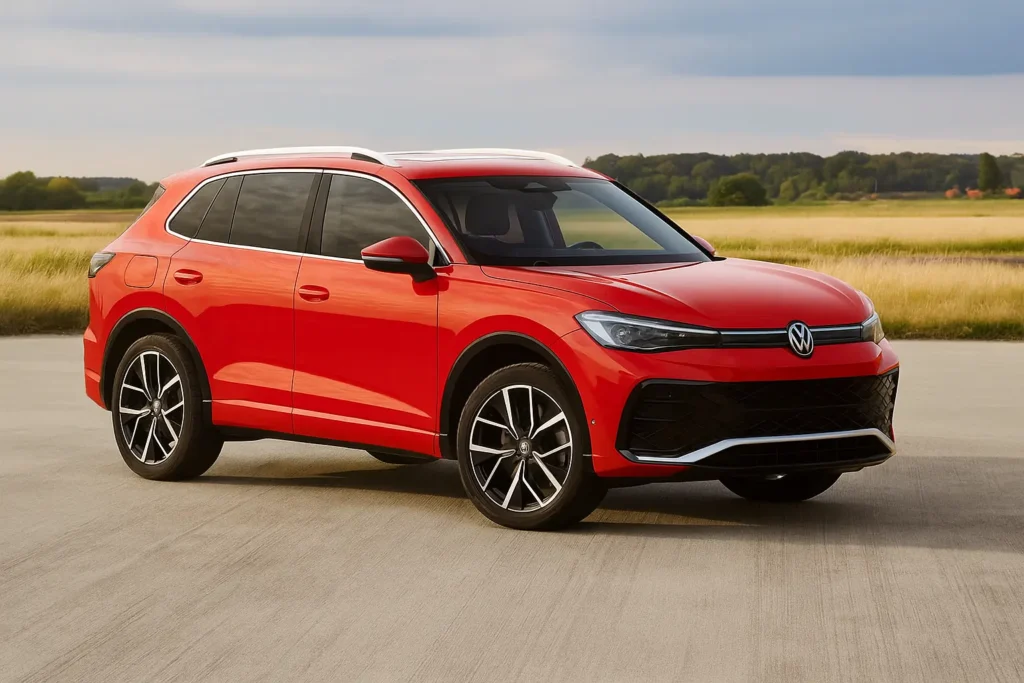
Interior and Comfort
The interior feels a bit like a politely decorated waiting room—cloth upholstery, manual seat adjustability, and plastic buttons that feel more “bulk order” than best-in-class—especially for a car that’s supposed to trounce the RAV4 and CX-5 in this segment. The dashboard layout is clean but oddly flat, with touch-sensitive controls that try to be clever but mostly just miss the tactile mark, and some gaps between panels that you’ll absolutely notice once you pull the door shut on a quiet morning. That said, give it a real-world trip or two, and things start to shift: the cabin is actually quiet at highway speeds, the panoramic sunroof (if you spring for the optional upgrade) opens up the space, and the visibility is wide enough that you stop complaining about the slightly tight second-row. The power-adjustable, six-way driver’s seat in the SE trim has just enough support and bolster to handle long drives without forcing a chiropractor into your monthly budget, and the passengers get decent legroom, even in the third-row, which—while clearly designed for children or very patient occupants—does offer that bit of flexibility that other compact models like the CX-50, Mazda, or even Lexus NX skip entirely. Faux-leather, rounded cushions, and some stylish if slightly simulated upgrades in higher versions improve the vibe incrementally, and while there’s no luxury wow factor here, you’ll find convenient touches like pouch storage, physical buttons (bless them), and air vents that actually respond. Is it expensive for what you get? Sure. But there’s a certain classic ease and background logic to the layout that makes the climbing learning curve worth it—and the body control on a bumpy ride is surprisingly absorbed for something riding on this platform. Just don’t expect to squeeze full-size adults into the third-row without a little muscle, a lot of humor, and probably one CX-5-owner making smug comments about gap coverage.

Cargo & Practicality
At first glance, the cargo space feels a little too compact for something pretending to be a three-row SUV—you look at the rear and think, “where do I even put my suit?” But once the second-row seats fold flat with that satisfyingly crisp pull, things start to look up. With 65.3 cubes behind the first row, and 37.6 with the second-row up, it’s not going to beat a Toyota Grand Highlander or Honda Pilot, but it’s surprisingly efficient for passenger and gear sizes that don’t include an entire youth soccer team. The center console is decently lined, there’s a tray for sunglasses, and the dash has just enough clever pockets to pretend VW’s designers thought about real people. Cupholders and bottle count in the door bins are fine—not generous, but not offensive. And while Tiguans max out at 1,500 pounds of towing, or 3,500 if equipped with the right hitch, let’s be honest—most occupants are using it to haul CR-V-sized groceries or IKEA regret. Still, in contrast to the oddly bloated Mazda CX-9 or Kia Sorento, the actual results feel strong, especially in two-row versions where you get up to 73.4 cubic feet. Just don’t expect your dealer to volunteer those numbers unless you ask, which I did—and was met with the kind of vague smile usually reserved for bad dates and RAV4 comparisons.

Tech & Connectivity
At first glance, the infotainment system feels like the kind of software update that arrives every few years and promises more than it delivers. You know, the kind that’s supposed to fix everything but ends up causing a few more annoyances. Sure, the touchscreen is adaptive, and I’m sure it’s the latest thing in digital design, but when the screen keeps freezing mid-song, or that familiar beep starts to sound like an air raid siren every time you try to adjust the volume, it’s hard not to feel frustrated. Maybe it’s me, maybe it’s just my luck, but for a while, I was stuck with the feeling that it was all a bit of a hassle. But then something clicked: the Apple CarPlay and Android Auto integration actually do make it easy to pair your smartphone without dealing with the typical tuning nightmare. Now, Wi-Fi and the USB-C ports? The S trim might be lacking, but other trims give you enough to avoid feeling like a tech dinosaur. It’s all there, from the navigation to the 9-speaker audio system, to the center screen that, admittedly, does get the job done. No, it won’t give you the next Volvo XC40 experience in terms of reconfigured controls, but for everyday drivers, it’s good enough—just not quite as smooth as you’d expect from VWs with their mid-year update.
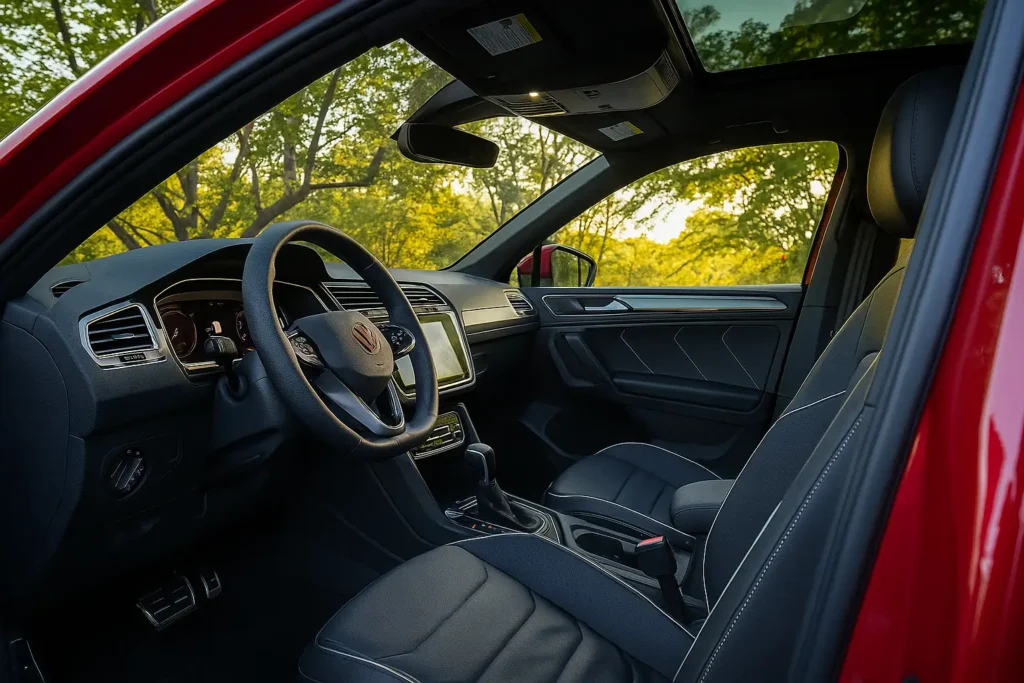
Safety
At first, I was skeptical about the IQ.Drive system. I mean, how much can a lane-keeping feature really save me from my own questionable driving decisions, right? But then, I hit the highway and found that the adaptive cruise control wasn’t just a gimmick. Sure, it beeped a little too much at first, and the blind-spot alert started to feel like an overprotective friend. But once I got used to the forward-collision warning and emergency braking, it became clear this system wasn’t just an annoying nanny—it was a genuine lifesaver. The NHTSA and IIHS crash-test results back it up, with solid results that show this tech actually works. It’s like a friendly co-pilot that’ll gently nudge you back into the right lane when your attention drifts, without making you feel like a failure. Honestly, after a few days, I was grateful for the lane-centering control and the automated safety features—until the Volvo XC60 came up beside me and reminded me that I’m not quite driving a luxury car yet. But hey, for a standard system, it does its job.
Warranty and Maintenance Plan
When I first looked at the warranty details, I thought I was getting a bumper-to-bumper deal—until I saw the fine print. The coverage for the powertrain is decent, but the scheduled maintenance isn’t quite as generous as I’d hoped. You’re looking at a limited period of four years or 50,000 miles—not terrible, but let’s be real, the Hyundai Tucson comes with a more extended offer in that department. You also get complimentary maintenance, but don’t get too excited; it’s not going to cover anything that could actually save you from shelling out cash at the dealer after 20,000 miles. It’s nice to have that no-charge service for the first few visits, but once the maintenance becomes your problem, you’ll realize that those reduced benefits don’t feel so generous. Still, it’s more than Volkswagens used to offer, and while it’s certainly not the best in the industry, it’s probably enough to keep you from getting too angry about the 72,000 miles of coverage you’re left with after the first couple of years.
Final Verdict
The 2024 model may seem like just another compact crossover caught in the endless battle of the German and Japanese brands. Sure, it has that slightly mature, almost conventional appeal with a user-friendly interface that’s easy to get used to—no need to study the infotainment system like it’s a college exam. The turbocharged engine is a bit more punchy than I expected, though the powertrain doesn’t quite match the refinement of its more luxurious counterparts. The steering feels dynamic but lacks the precision of more sporty competitors, leaving you wondering if it’s still a tad stuck in the bulk of mainstream, mass-market affordability. The R-Line trim, though, offers a glimpse of something elevated, with a more elevated ride—albeit with some minor compromises in drivability. As a package, it fits into the segment well enough, and while it undercuts some rivals in price, the comfort and tech make it an easy choice for those who don’t need the luxury of a Toyota or Mazda. All things considered, the Tiguan doesn’t wow at every turn, but it offers a solid set of features for a well-rounded, convenient option in the crossover market.
More images of the 2024 Volkswagen Tiguan SEL R-Line 4Motion
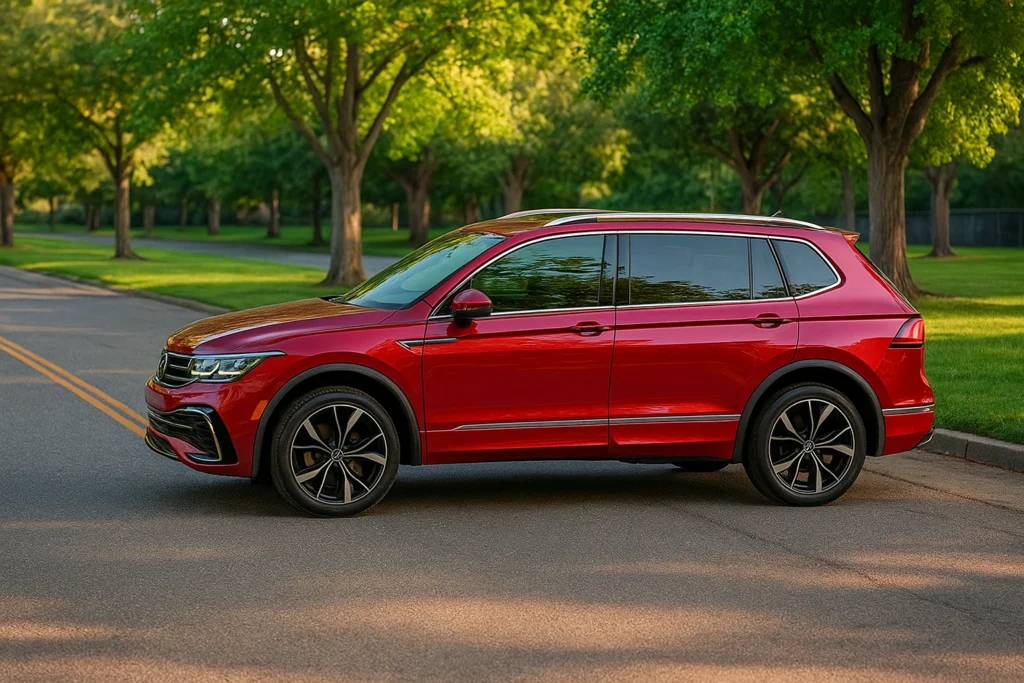

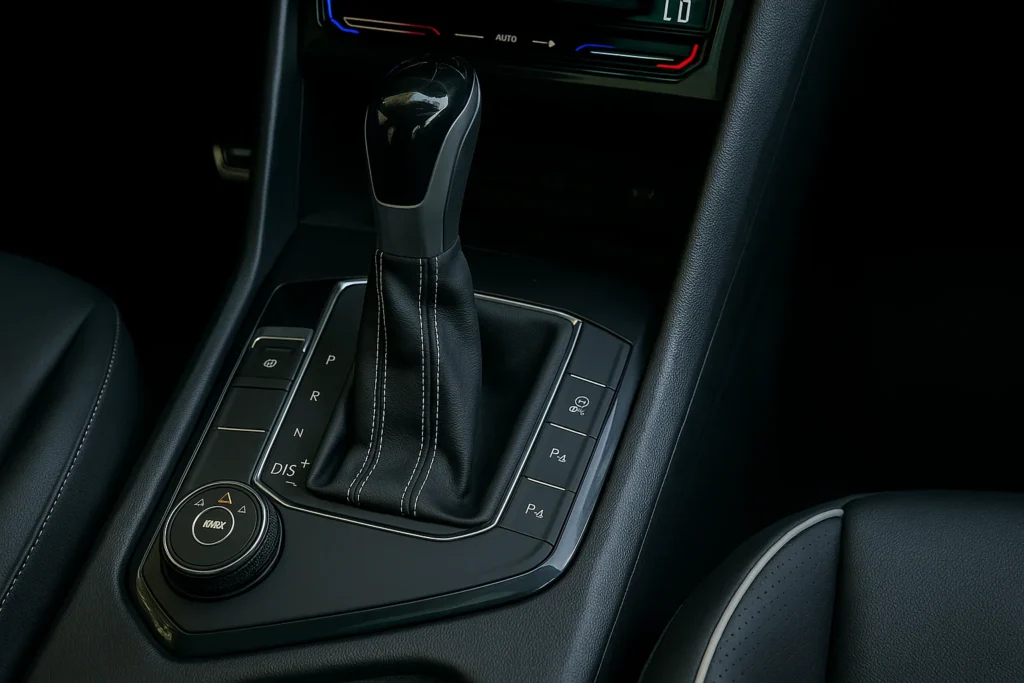
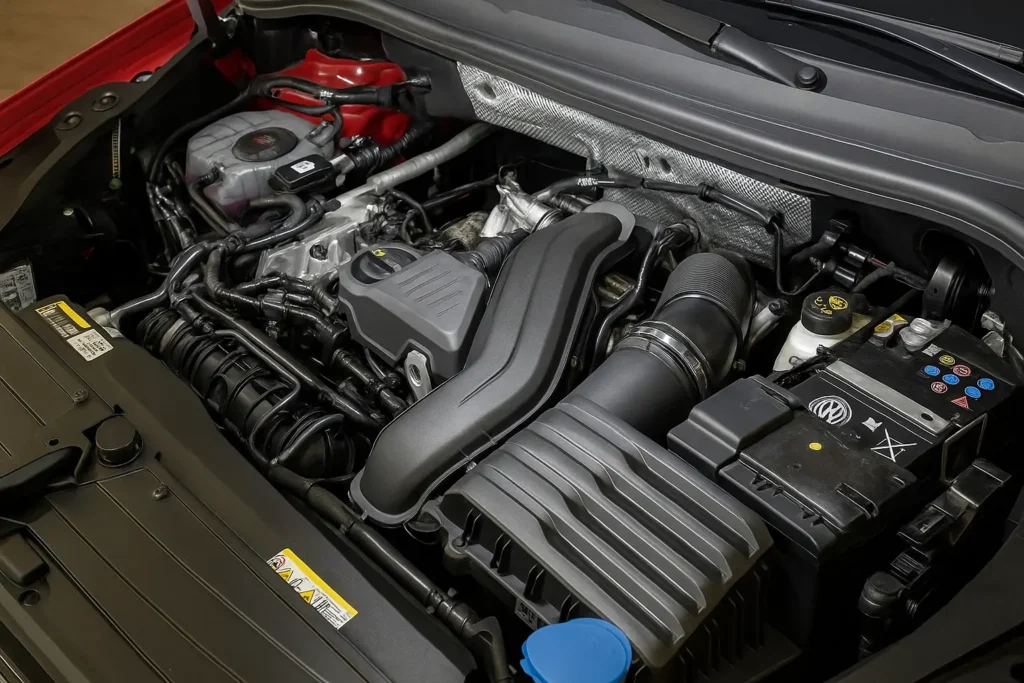


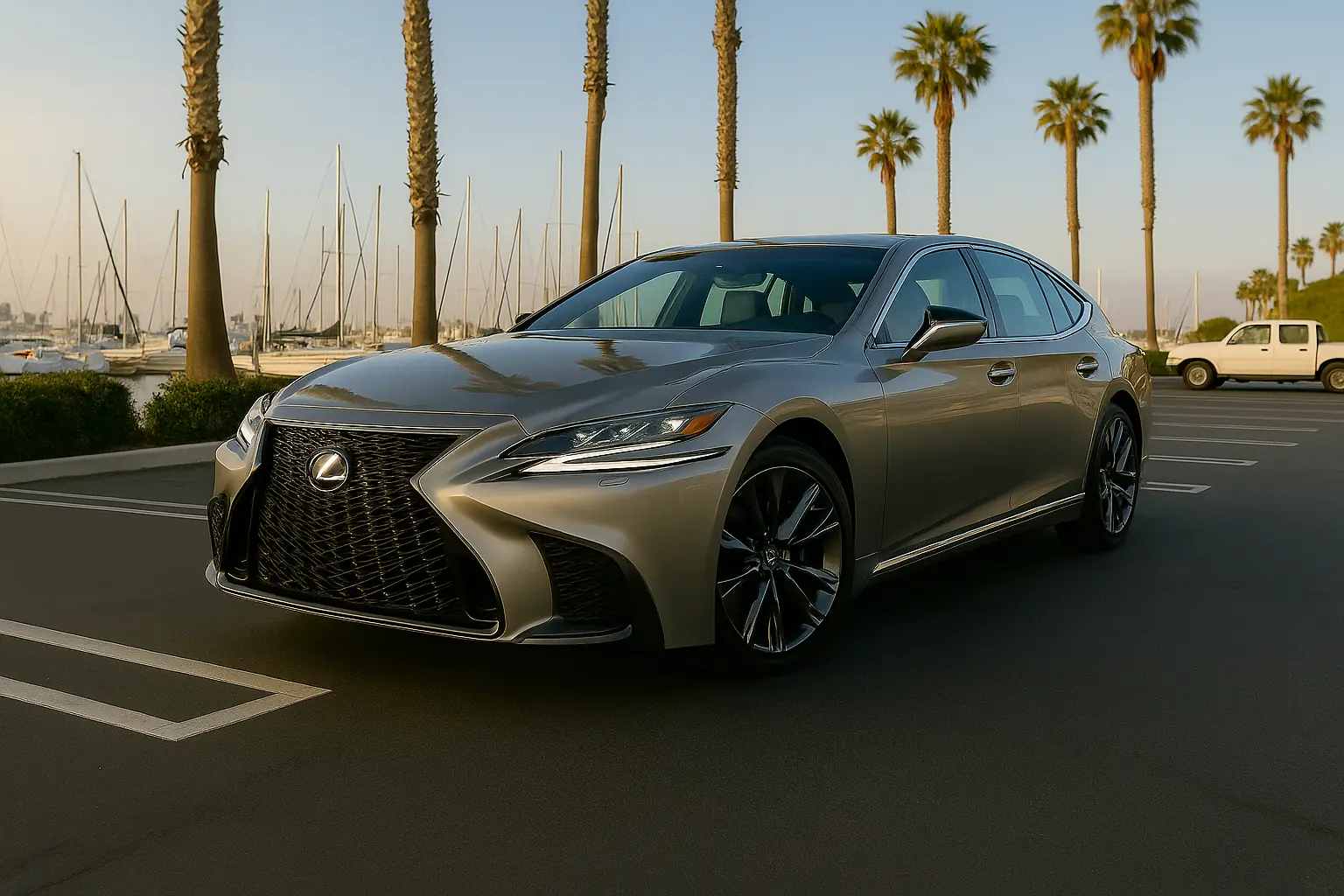
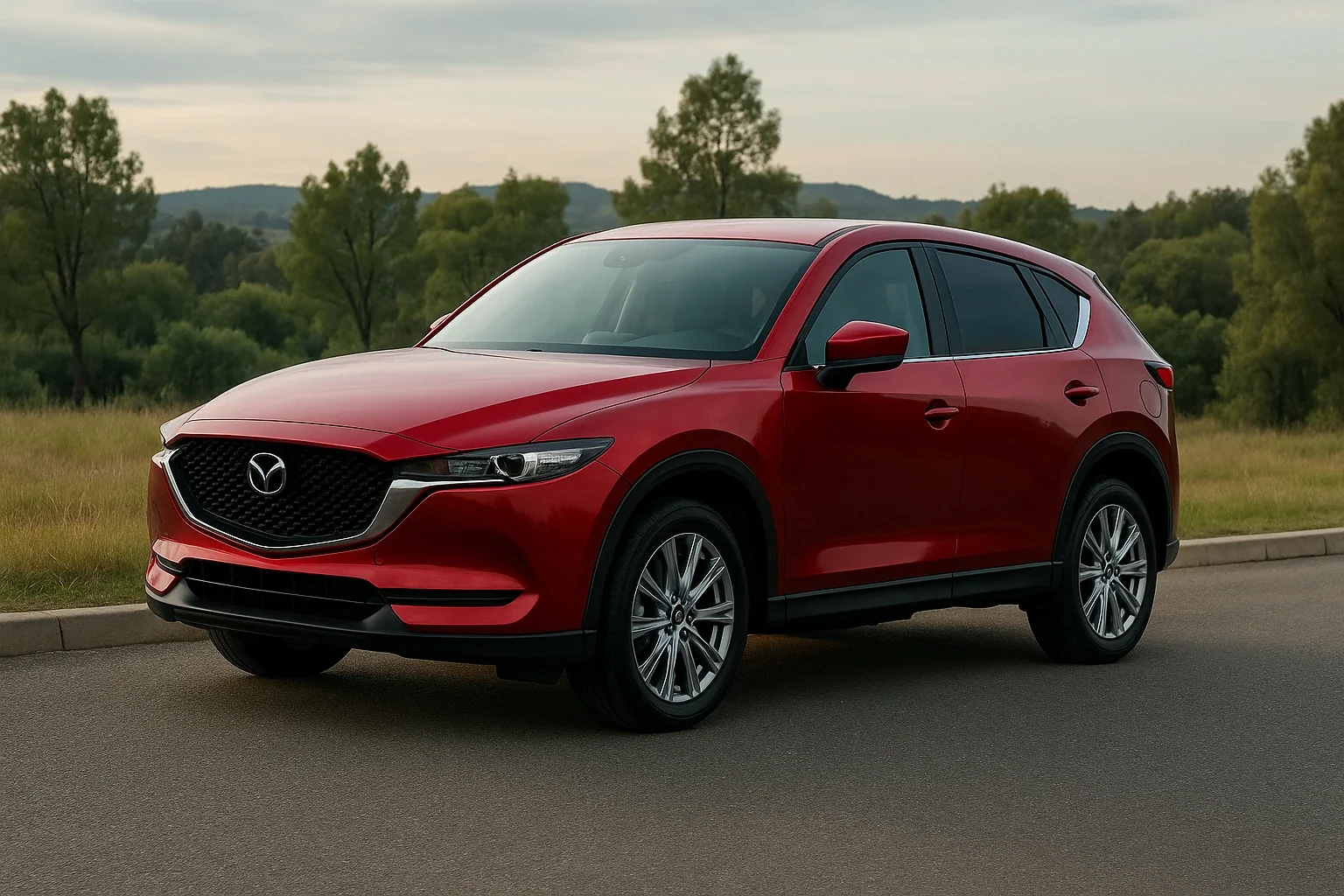
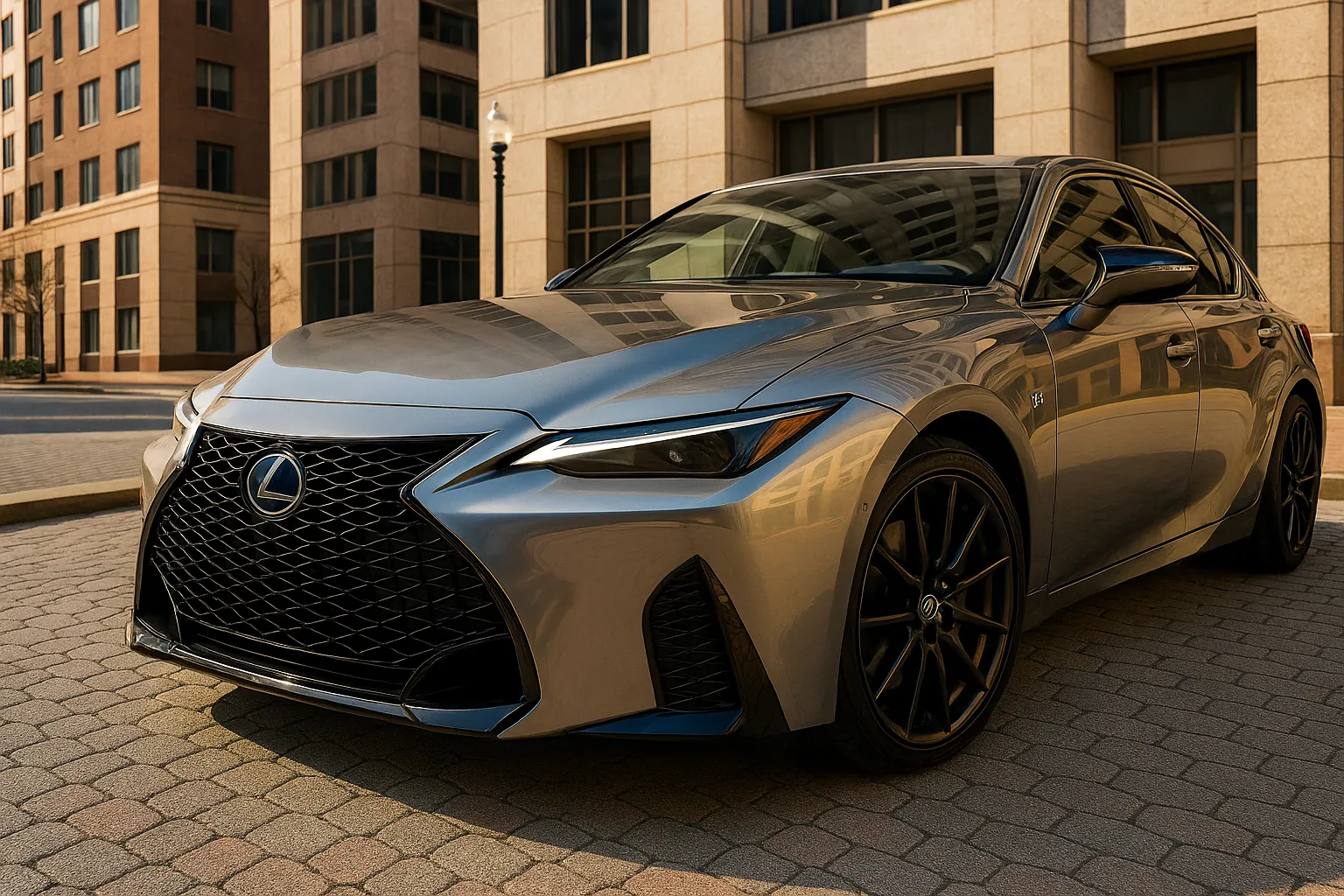
This Post Has 6 Comments
Pingback: 2022 Volkswagen Tiguan SEL R-Line Review | Smart & Capable
Pingback: 2024 VW Atlas SEL Premium R-Line: Real-World Review
Pingback: 2024 VW Atlas Cross Sport Review: Real-World SUV Tested
Pingback: 2022 VW Golf R Review: Hot Hatch King Worth $45K? | Vyocar
Pingback: 2021 Volkswagen Tiguan Review: Specs, Performance & Pics
Pingback: 2024 VW ID.4 Pro S Review: Performance, Range & Worth It?